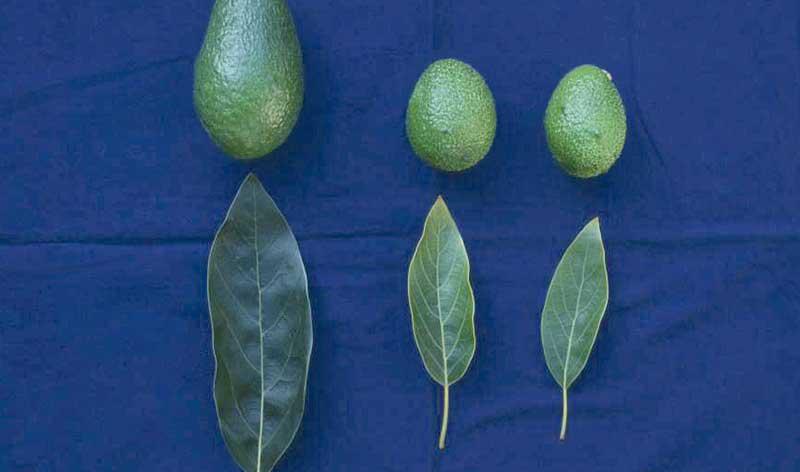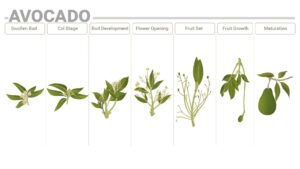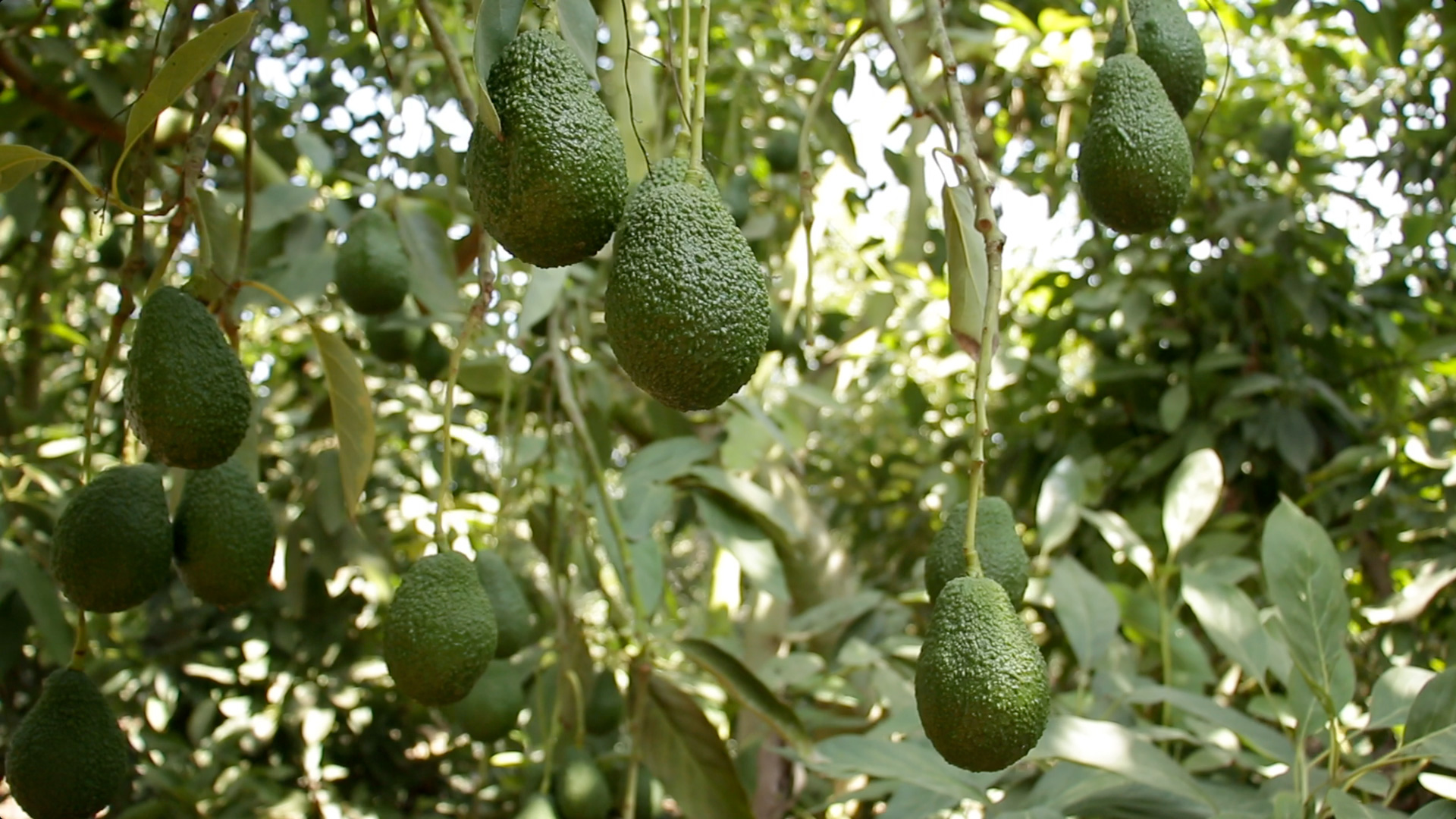Potassium deficiency in avocado trees is expressed firstly by the older leaves. Numerous scattered small light- brown specks show on the interveinal areas of the leaf, and irregular chlorosis develops along the leaves' margins. The chlorosis develops as large irregular necrotic spots, changing their color from light- yellow to tan, then- to brown. As the leaves age, the brown specs coalesce into large, irregular, reddish-brown areas of dead tissue between the large veins, along the margins, or at the tip. The leaves are also markedly smaller and may also curve downwards. One of the problems with defining potassium deficiency is that the leaf symptoms (tip burn, margin necrosis and interveinal necrosis) are very similar to chloride-, sodium- and salinity toxicities, which are very common in many avocado growing regions in the world. K deficiency may reduce tree's resistance to diseases, and winter hardiness. The trees may grow slower than normal, presenting thin twigs, and dieback. K deficiency also reduces mean fruit size, and results in shriveled seeds.





